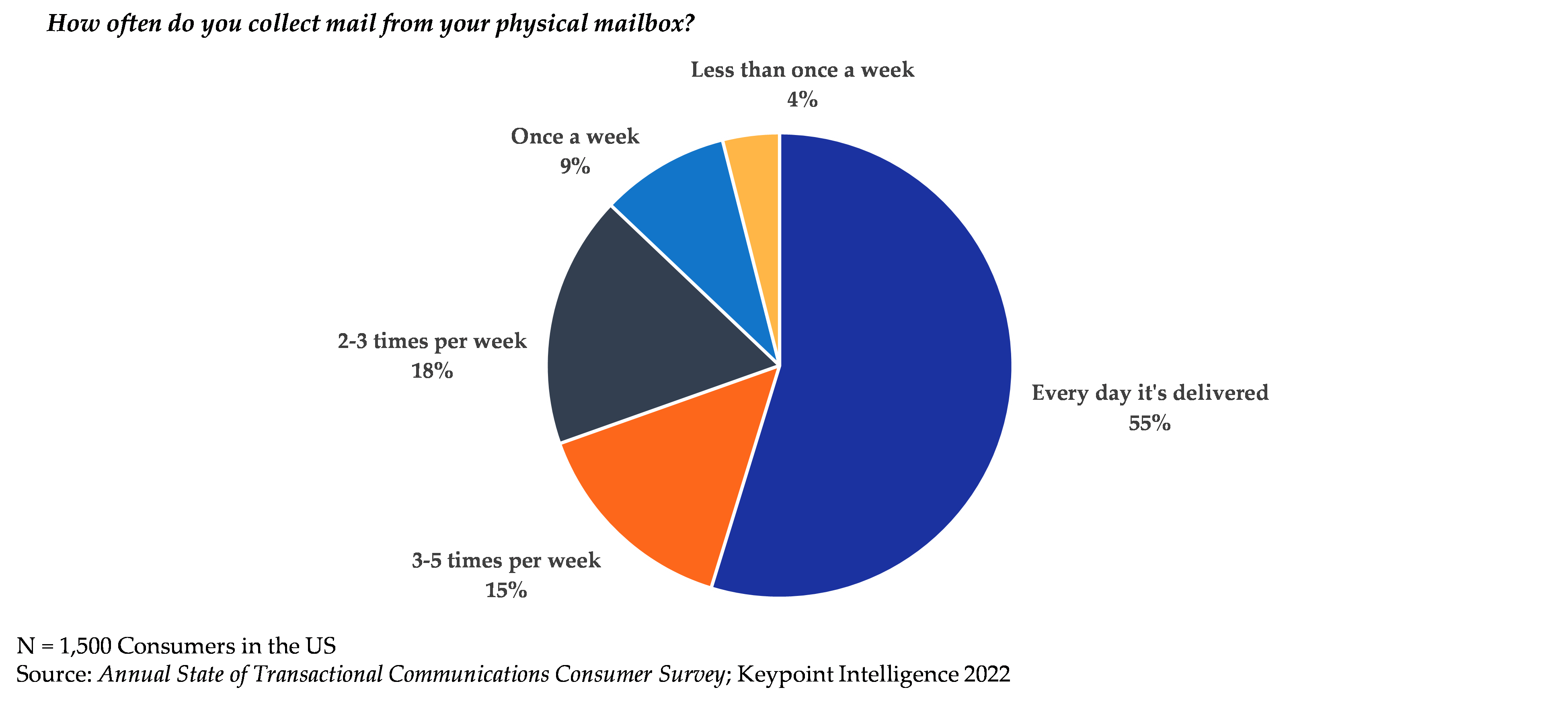If you ask business leaders who are responsible for customer communications about their primary focus, they will almost always mention providing an exceptional customer experience (CX). As a result, the number of business disciplines that focus on refining this "experience" is not surprising. For example, there are now initiatives to examine and improve the user experience (UX), the employee experience (EX), the digital experience (DX), and even the total experience (TX). Each of these disciplines builds on others and is designed to tackle the threat of customers (or employees) considering competitive options.
Due to the laser-like focus on a certain experience, it is critical to understand how customers want to interact with their service providers when it comes to transactional communications. Businesses that fail to consider the best ways to engage with their audience risk severing the bond between the customer and the brand. With the vast number of ways that today’s customers want to receive information, communicating with them has become increasingly complex. This article cites fresh research from Keypoint Intelligence to explain why transactional print is essential for any customer communications strategy.
Getting Everyone on the Same Page
There’s an unspoken assumption that consumers are driving the shift towards digital delivery of transactional documents, leveraging convenience and tailored preferences to create a more streamlined experience. This can certainly be true for tech-savvy users — easy access to bills and statements via a mobile device or tablet will serve them well. Despite the growing number of people who use online communications, it’s not always wise for brand owners to push everything to an online platform.
At one point, businesses were hesitant to send exclusively digital documents to their customers because the elimination of printed transactional communications would completely ostracize the large number of consumers who did not have regular access to the internet. Today, thanks to ongoing technological advancements and increased development of rural areas, roughly 92% of Americans can access and use the internet. So why do organizations continue to print and mail transactional documents — is it merely for the benefit of the 26 million people in the United States who don’t use the internet? Technological advances aside, it’s becoming clear that the desire to transition away from printed transactional communications is not simply a matter of access to the internet. Individual customer preferences and other factors are bringing the importance of the customer experience front and center. Even in today’s digital world, printing and mailing volumes remain higher than some might have expected.
A Brand Perspective
Each year, Keypoint Intelligence conducts its State of Transactional Communications Business Survey. This study offers insight into current market trends and highlights the shifts that are occurring in document delivery. Surprisingly, the most recent study revealed that there is little difference between the volumes of transactional documents that are delivered digital only and those that are sent exclusively via print and mail. In fact, businesses are using all available delivery options (e.g., digital only, both digital and print, and print only) fairly evenly.
Although enterprises recognize the potential cost savings that can be associated with paperless adoption, survey data shows that there will not be a major shift toward digital communications over the next two years. As shown in Figure 1, digital only delivery is expected to increase only incrementally in the near term. Customer preferences are paramount in today's world, and this has resulted in an increasingly blended channel delivery system.
Figure 1: Volume Mix of Transactional Documents (Current vs. Future)

A Consumer Perspective
On the consumer side, research also proves that consumers of all ages recognize the value that printed mail delivers. Keypoint Intelligence asked consumers of transactional communications for their input on print/mail delivery. As seen in Figure 2, over half of consumer respondents collect mail from their mailboxes every day it’s delivered.
Figure 2: Frequency of Mail Collection

There’s no denying that the digital transformation is upon us, but customers remain firmly attached to physical documents when it comes to their transactional communications. For example, respondents to the same survey mentioned above reported that over 42% of the bills and statements they receive are printed and received by mail. Meanwhile, 39% of bills and statements are received in both digital and printed format. Ultimately, consumers like having both print and digital versions of these communications. Printed transactional documents will likely remain popular due to ongoing concerns about the security of online transactions and the risk of fraud and identity theft.
The desire to streamline business practices means that companies are reconsidering everything, including traditional communication practices. Now more than ever, it’s important to put the customer first and prioritize their preferences. Brand loyalty is dependent on a friction-free customer experience. Today’s brands must strengthen their relationships with prospective and current customers. That starts with honoring communication preferences and simplifying the methods of engagement.
The Bottom Line
As technologies continue to evolve and customer expectations shift, customer communications remain a vital component of successful business operations. The ways in which companies communicate with their customers can make or break relationships, set the tone for future interactions, and even impact a customer's perception of your brand. To pave the way for continued loyalty and growth, enterprises must extend their transactional document delivery options, recognize and honor unique consumer preferences, and connect with customers in a well-established and trusted manner.
Karen Kimerer of Keypoint Intelligence has experienced the many challenges of expanding current market opportunities and securing new business. She has developed a systematic approach to these opportunities, addressing the unique requirements of becoming a leader in our changing industry. She is well-versed in 1:1 marketing, web-to-print, direct mail, book publishing, supply chain management, data segmentation, channel integration, and photo products.
This article originally appeared in the January/February, 2023 issue of Mailing Systems Technology.









